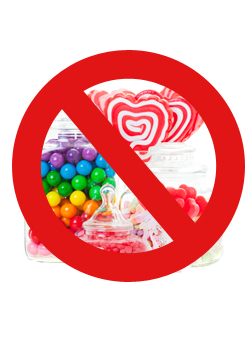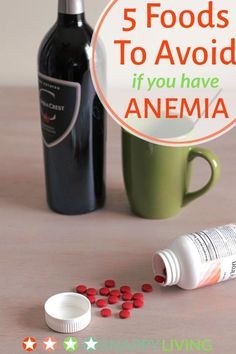
There are healthy foods that you can avoid if you have GERD. But, this doesn't mean you have to cut out all your favorite foods. Your symptoms will improve and your chances of getting GERD are lower if you make changes to your diet. Your diet should be modified to include non-citrus fruits. Also, you can eat more vegetables and avoid the high-fat varieties.
Aside from fruits and vegetables, you can add fresh herbs to your meals to add flavor to your dishes. They should not be too acidic. Onions can be used to enhance flavor and not cause irritation. To achieve the same effect, you could also try green or white shallots. Regardless of the type of onion you choose, you should start with a small amount and increase it gradually.
Tomatoes as well as tomato sauce are two of the most frequent foods to avoid when you have GERD. Tomatoes are high in lycopene, a powerful cancer fighter. However, the acidity of tomatoes can cause irritation to the already inflamed tissue of the esophagus. For that reason, they should be avoided whenever possible. Watermelon, watermelons and tomatoes are other foods that contain Lycopene.

You should not eat pizza every day if you are able. However, pizza should be eaten at least once per week. Combining spicy and fatty food can worsen GERD symptoms. Fried and fatty foods should also be avoided. Avoid chocolate, coffee and alcohol. Acid reflux can be caused by caffeine. Those suffering from GERD should limit their intake of these drinks.
You should avoid spicy food. Even though onions can be a healthy staple, heartburn can occur. Onion stimulates production of acid, bile and other nutrients. Thankfully, cooking onions can help smother the fire. Adding onions to your list of foods you should avoid if you have GERD will help you manage it. So, while these are not the only foods to avoid with GERD, they are still important to know.
Many of these foods can be harmful, and you may need to avoid them. If you have GERD then spicy foods should be avoided. These foods can increase the acidity of the stomach by altering the lower-esophageal secretion. Also, avoid chocolates that contain caffeine or cocoa. All of these substances are acidic and should be avoided with GERD.
It is crucial to understand which foods can trigger GERD. Some foods can worsen symptoms while others may cause severe pain. Some foods to avoid with GERD include citrus fruits, citrus juice, and alcohol. It is important to eat these foods in moderation if you want to maintain your health. You should limit the amount of these food items in your diet. If you're not sure which foods to avoid with GERD, you should consult your doctor to discuss your symptoms.

If you have GERD it is important to avoid spicy foods as well as alcohol. GERD can occur from the foods they contain. Limiting your intake of these foods can lead to GERD. Keep in mind, however, that caffeine and alcohol are acidic. You should avoid eating certain foods if your GERD symptoms are caused by them.
Citrus fruits, another food to avoid, is GERD. Grapefruit and oranges contain high levels of citric acid, which can worsen your symptoms. It is important to reduce your citrus fruit intake. It is not necessary to cut out all citrus but it is important to keep your consumption to a minimum. Instead, eat the fruits and drink as much as possible. However, you can reduce your citrus fruit intake if you absolutely have to.
Avoid dairy products if you have GERD. People with GERD may find dairy products soothing, but this can aggravate their condition. Avoid caffeine, alcoholic drinks, caffeine and other stimulants. Your diet may be a contributing factor to your GERD symptoms. You should talk to your doctor if you have any specific food allergies. You'll be able to make a healthier choice if you're already taking medications for GERD.
FAQ
What is the best way to eat?
The best diet for you depends on several factors, like your age, gender, weight, health conditions, and lifestyle habits. You should also consider how much energy your exercise consumes, whether you like low-calorie or high-calorie foods, and what you enjoy in terms of eating fruits and veggies.
If you are trying to lose weight, then you may want to try intermittent fasting. Intermittent fasting allows you to consume only certain meals per day, instead of eating three large meals. This approach may prove to be more beneficial than traditional diets that have daily calorie counts.
Research suggests that intermittent fasting may increase insulin sensitivity and lower inflammation. This can result in a reduction in blood sugar levels and a reduced risk of developing diabetes. Research also shows that intermittent fasting may increase fat loss and improve overall physique.
Why does weight change as we age?
How can you tell if your bodyweight has changed?
Weight loss occurs when there is less fat than muscle mass. This means that you must consume more calories than you use daily. The most common cause of weight loss is decreased activity levels. Other causes include illness, stress, pregnancy, hormonal imbalances, certain medications, and poor eating habits. Weight gain is when there are more calories than muscle mass. It happens when people eat more calories than they use during a given day. Common reasons include overeating, increased physical activity, and hormonal changes.
The primary reason we lose weight is that we consume less calories than what we burn. By exercising regularly, our metabolism rates increase which in turn burns more calories during the day. But, this does not mean that we will be thinner. It is important to know if we are losing weight or gaining muscle. We will lose weight if we burn more calories than we consume. But if you consume more calories than you burn, you're actually storing them for fat.
As we age, our ability to move around is slower and we are less mobile. We also tend eat less than we used to. Also, we are more likely to gain weight. However, our muscle mass is more important than we realize and makes us appear larger.
Without weighing yourself each week, there is no way to know how much weight you have lost. There are many ways you can measure your weight. You can measure your waist, hips and thighs as well as your arms. Some people prefer using bathroom scales and others prefer tape measure.
Track your progress by measuring your waistline and weighing yourself every week. To see how far you have come, you can take photos of yourself every few month.
You can also find out how much you weigh by looking up your height and weight online. If you are 5'10" tall, and you weigh 180 lbs, then you would probably weigh 180 lbs.
How often should i exercise?
It is important to exercise for a healthy lifestyle. You don't have to exercise for a certain amount of time. It is important to find something that you enjoy and stay with it.
If you work out three times a week, then aim to complete 20-30 minutes of moderate intensity physical activity. Moderate intensity is when you still have to breathe hard after the workout. This type works out burns around 300 calories.
If you prefer to walk, go for 10 minute walks four days a week. Walking is easy on the joints and has low impact.
Jogging three times a week for 15 mins is enough if you want to run. Running is a great way to burn off excess calories and build muscle tone.
Start slowly if you aren't used to doing exercise. Start with just 5 minutes of cardio a few times a week. Gradually increase the time you do cardio until your goal is reached.
These are 5 ways you can live a healthy and happy life.
Living a healthy lifestyle includes eating right, exercising regularly, getting enough sleep, managing stress, and having fun! You should avoid processed foods, sugar, or unhealthy fats. Exercise is good for your body and muscles. Sleeping enough is good for memory and concentration. Stress management helps reduce anxiety and depression. Fun keeps us happy and healthy.
What is the most healthful lifestyle?
Living a healthy lifestyle is one that encourages you to eat well, exercise regularly, get enough sleep, and avoids stress. If you follow these guidelines, you will be able to lead a long and healthy life.
Small changes to your diet or exercise routine can help you start losing weight. If you're looking to lose weight, walk for 30 minutes each morning. Swimming or dancing are great options if your goal is to become more active. You could also join an online fitness program like Fitbit or Strava that tracks your activity levels.
What are 10 healthy habits you can adopt?
-
Get breakfast every morning.
-
Don't skip meals.
-
Eat a balanced, healthy diet.
-
Get plenty of water.
-
Take good care of your body.
-
Get enough sleep.
-
Stay away from junk foods.
-
Get at least one form of exercise each day.
-
Have fun
-
Find new friends
Do I need calories to count?
You may be wondering "what is the best diet for you?" or "is counting calories necessary?" This depends on your health and lifestyle.
The Best Diet For Me - Which One Is Right For You?
My personal health, goals and preferences as well as my lifestyle determine which diet is best for me. There are many good and bad diets. Some are better for certain people than others. So what do I do? How can I make the right choice?
These are the main questions addressed by this article. It starts with a brief introduction of the different types of diets available today. Next, we'll discuss the pros and cons for each type of diet. Then, we will discuss which diet is the best.
To begin, let's take a quick look at the different types of diets.
Diet Types
There are three main types: low-fat, high-protein, or ketogenic. Let's look at each one briefly.
Low Fat Diets
A low-fat diet reduces the amount of fats you eat. This is achieved through reducing intakes of saturated fats (butter and cream cheese, for example). You can replace them with unsaturated oils (olive oil and avocados) People who are looking to lose weight quickly and easily will benefit from a low-fat diet. However, this kind of diet may cause problems such as constipation, heartburn, and indigestion. If a person doesn’t receive enough vitamins from their foods, this can lead to vitamin deficiency.
High Protein Diets
High-protein diets limit carbohydrates and favor proteins. These diets often have higher levels of protein than most other diets. These diets are meant to increase muscle mass, and burn more calories. Unfortunately, they can't provide adequate nutrition for those who eat regularly. They are not suitable for all people because they can be restrictive.
Ketogenic Diets
Also known as keto diets, ketogenic diets are also called keto diets. They are high in fat, moderately high in protein and low in carbohydrates. They are typically used by athletes and bodybuilders because they allow them to train harder and longer without getting tired. To avoid side effects such as fatigue, nausea, headaches, or other unpleasant side effects, you must strictly adhere to their instructions.
Statistics
- WHO recommends consuming less than 5% of total energy intake for additional health benefits. (who.int)
- nutrients.[17]X Research sourceWhole grains to try include: 100% whole wheat pasta and bread, brown rice, whole grain oats, farro, millet, quinoa, and barley. (wikihow.com)
- In both adults and children, the intake of free sugars should be reduced to less than 10% of total energy intake. (who.int)
- WHO recommends reducing saturated fats to less than 10% of total energy intake; reducing trans-fats to less than 1% of total energy intake; and replacing both saturated fats and trans-fats to unsaturated fats. (who.int)
External Links
How To
What does the term "vitamins" mean?
Vitamins are organic compounds that can be found in foods. Vitamins are essential for our bodies to absorb nutrients from the foods we eat. Vitamins cannot be produced by the body. They must be acquired from food.
There are two types of vitamins: water soluble and fat soluble. Water-soluble vitamins dissolve quickly in water. You can find vitamin C,B1 or thiamine, B2 or riboflavin and B3 or niacin, B3/niacin, B6/pyridoxine, folic Acid, biotin and pantothenic Acid as examples. Fat-soluble vitamins can be stored in the liver or in fatty tissue. Examples include vitamin D, E, K, A, and beta carotene.
Vitamins are classified according to their biological activity. There are eight major vitamin groups:
-
A - Essential for healthy growth and health maintenance.
-
C is important for nerve function and energy production.
-
D - Essential for healthy teeth and bones.
-
E is required for good vision and reproduction.
-
K - essential for healthy muscles, nerves, and bones.
-
P - vital for building strong bones andteeth.
-
Q - Aids in digestion and absorption.
-
R - necessary for making red blood cells.
The recommended daily allowance for vitamins (RDA) varies based on gender, age, and physical conditions. The U.S. Food and Drug Administration sets RDA values.
For adults aged 19 and older, the RDA for vitamin B is 400 micrograms daily. Because it is essential for the development of the fetus, pregnant women should consume 600 micrograms per daily. Children ages 1-8 require 900 micrograms per day. Infants under one year of age require 700 micrograms per day, but this amount decreases to 500 micrograms per day between 9 months and 12 months of age.
Children aged 1-18 years need 800 micrograms daily, while children overweight require 1000 micrograms per days. Children who are severely obese or underweight will need 1200 micrograms each day.
Children 4-8 years old who have anemia must consume 2200 micrograms of Vitamin C daily.
2000 micrograms per person is necessary for general health. Because of their higher nutrient needs, women who are pregnant or nursing need 3000 mg per day.
Adults over 70 require 1500 micrograms each day, since they lose around 10% of their muscle mass every decade.
Women who are pregnant or nursing need more than the RDA. Pregnant women need 4000 micrograms per dayduring pregnancy and 2500 micrograms per day after delivery. Breastfeeding mothers require 5000 micrograms daily when breast milk production is occurring.